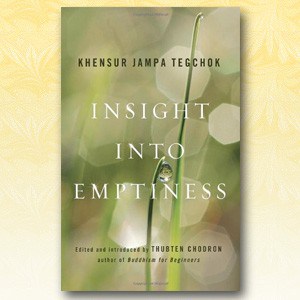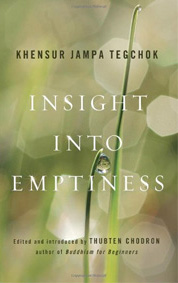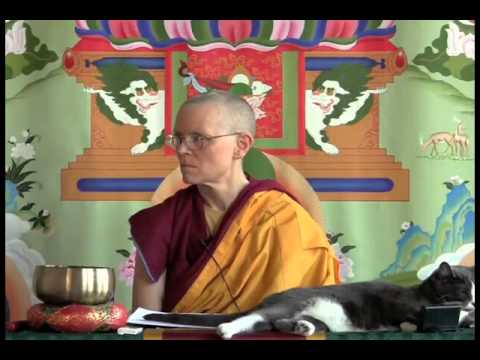Causal dependence
Similes from the Diamond Cutter Sutra

Featured in Mandala Magazine, July 2012
The simile of the cloud is connected to phenomena of the future and illustrates their lack of existence from their own side. Rain cannot fall from a completely clear sky. For rain showers to happen, first clouds must gather in the sky. Then the rain falls, and that has the potential to make crops grow, trees become full, and fruit ripen. Nevertheless, the sky itself has been clear all along. The clouds are adventitious; they arise dependent on causes and conditions.
In the same way, the nature of the mind is clear light in that it totally lacks self-existence. Yet within the clear light and empty nature of the mind, the clouds of afflictions and their latencies gather. They motivate us to engage in many actions, which produce the various ripening results that we experience in the future. Like the simile of a cloud, this is a dependently arising process: ignorance, afflictions, karmas, happy, and miserable results all occur through dependence. Being dependent, they do not exist in the way they appear. They gather and disperse just like clouds, yet seem real while they are present.
All of these causes and results exist by being merely imputed by term and concept. If they were inherently existent, causes and their results would exist at the same time. It would be as the Samkhyas believe when they assert arising from self: the results would exist in a non-manifest form in the cause. In that case, the crops, trees, and fruit would have to already exist inside the rainclouds that are their cause, and there would be no need for the rain to produce them.
The Tibetan word for future means “that which has not yet come.” If any resultant phenomenon were inherently existent, it would not need to depend on a cause to arise. That is because something that exists inherently already has its own entity. Something that already has its own entity does not need to arise; it already exists and so doesn’t need to be produced.
Conventionally existent causes and results do not need to meet, but inherently existent ones would have to meet. If they didn’t meet, how could one produce the other? There would be a time gap between them. But if they met, they would occur at the same time, in which case a sprout would already exist, and it wouldn’t be necessary for a seed to produce it.
In general, for a result to arise, its cause must cease. That means that the result comes about through the ceasing of its cause. There are two ways in which a cause gradually transforms into the result. In one way, the cause ceases to be seen. For example, when a huge tree grows from a seed, the seed has disappeared, and we no longer see it. In the second way, there is a continuity of a similar type. For example, when we cook rice, the rice undergoes a transformation by changing constantly, moment by moment. At the end, we still see something that we call “rice,” although it is not the same as the rice before it was cooked.
We may think, “My mother is the cause of me. Are you saying that she has to cease for me to be born?” Of course not. However, our mother when we were born was not the same as our mother when we were a toddler. She had changed moment by moment, even though she still had the same label, “my mother.”
The ceasing of the cause and the arising of the result are simultaneous, yet we know that when we were born our mother did not cease to exist. So when we say the cause ceases when the result arises, it does not mean the cause utterly ceases to exist or the person dies. Rather, it means that it undergoes momentary change in which case the earlier moments in the continuity cease while later moments of that continuity arise. The continuity of our mother exists after we were born.
Causal dependence–causes producing results and results arising from causes—is one type of dependent arising. This demonstrates that things do not exist from their own side, independent of anything else. It also proves that things do not exist as they appear. This resembles the simile of the cloud: first there is the clear sky, then clouds form in it, the rain falls, and the crops and plants in the earth below are nourished and grow. All along one thing happens depending on another. None of this could take place if things existed from their own side.
Venerable Thubten Chodron
Venerable Chodron emphasizes the practical application of Buddha’s teachings in our daily lives and is especially skilled at explaining them in ways easily understood and practiced by Westerners. She is well known for her warm, humorous, and lucid teachings. She was ordained as a Buddhist nun in 1977 by Kyabje Ling Rinpoche in Dharamsala, India, and in 1986 she received bhikshuni (full) ordination in Taiwan. Read her full bio.



